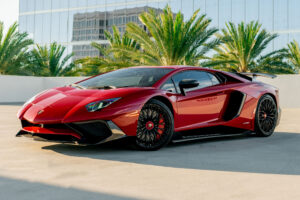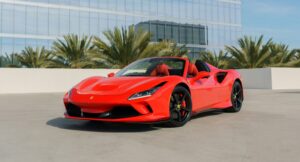Rolls-Royce is synonymous with unparalleled excellence and prestige in the automotive and aerospace sectors. Established at the turn of the 20th century, it resulted from a partnership between Henry Royce, a talented engineer with an innate knack for mechanical perfection, and Charles Rolls, an entrepreneur with a vision for creating superior motor cars.
Royce’s engineering expertise and Rolls’s business acumen formed a brand that would become a benchmark for luxury and quality.
The brand’s reputation for quality was cemented early on, with Rolls-Royce cars demonstrating their reliability and endurance in rigorous tests and races, a remarkable advancement at the time.
The sheer meticulousness with which Henry Royce approached engineering ensured that each vehicle was a testament to craftsmanship. At the same time, Charles Rolls’s pursuit of a superior driving experience established Rolls-Royce as a leader in the luxury automobile market.
Rolls-Royce maintained its commitment to engineering excellence as the company expanded beyond luxury cars into the aerospace industry. The introduction of the Trent series of aero engines further emphasized the brand’s innovative spirit, making significant contributions to aviation. This adaptability and continuous innovation have ensured that Rolls-Royce remains a prominent name, symbolizing a legacy of engineering marvels and the relentless pursuit of perfection.
Founding and Early History
The genesis of Rolls-Royce is marked by the collaboration of Henry Royce and Charles Rolls, who created vehicles that defined luxury and quality. Their endeavors laid the groundwork for what many would call the best car in the world.
The Partnership of Royce and Rolls
Henry Royce, an engineer from Manchester, constructed his first motor car, the Royce 10, in 1904. This car, known for its reliability and quality, caught the attention of Charles Rolls, who owned a dealership in London.
He sought high-quality cars to sell, and Royce’s vehicle met his stringent criteria. The two men agreed to a partnership in which Royce would manufacture the vehicles, and Rolls would sell them under the name Rolls-Royce.
The Birth of the Silver Ghost
In 1906, Rolls-Royce introduced the Silver Ghost, establishing the burgeoning company’s reputation for unmatched automotive excellence. It featured a silent and robust 6-cylinder engine and was lauded for its exceptional build quality.
Its performance and reliability were so superior that it earned the accolade “the best car in the world,” confirming the brand’s commitment to automotive leadership. The Silver Ghost had a significant impact, serving as a testament to the partnership’s emphasis on luxury and high-quality standards.
Rise to Prominence and Challenges
Rolls-Royce’s ascent to an unrivaled leader in luxury car production is marked by its significant contributions during challenging periods such as World War I and the resilience the company showcased during the Great Depression.
World War I Contributions
During World War I, Rolls-Royce Limited became more than a luxury car manufacturer; it became a vital contributor to the war effort. The company’s Silver Ghost model, which had garnered acclaim for its unmatched reliability and performance since its introduction in 1907, was adapted for combat as an armored vehicle.
Apart from providing transportation, Rolls-Royce also diversified into aviation, supplying the Royal Air Force with the renowned Eagle aero engine, marking its entry into aircraft engine production. This decision supported the war effort and laid the groundwork for the company’s future in aerospace.
The Great Depression and Aftermath
The Great Depression of the 1920s and 1930s posed a tremendous challenge to many industries, including the automobile sector. Despite the economic downturn, Rolls-Royce Limited navigated these turbulent times by continuing to develop its high-end luxury vehicles.
The introduction of the Phantom series, with the Phantom I, in 1925 reaffirmed its commitment to innovation, opulence, and engineering excellence.
The company’s determination to uphold its reputation allowed it to maintain its status among nobility and wealthy patrons. In this era, Rolls-Royce also secured its acquisition of Bentley, another luxury car brand, in 1931 and later merged with Vickers in 1980, a strategic move that would ensure the company’s survival and growth in subsequent decades.
Evolution of Luxury Vehicles
Rolls-Royce has led the luxury vehicle market with its commitment to performance, innovation, and unparalleled luxury. Each model released by the company reflects a remarkable blend of superior components and materials, embodying the pinnacle of automotive excellence.
Notable Models Over the Decades
- 1900s: The Silver Ghost set a high bar for craftsmanship and reliability, earning the title of “the best car in the world” soon after its release in 1906.
- 1950s: Introducing the Silver Dawn brought about a new era of luxury motoring with enhanced features and sleek design.
- 1960s: The Silver Shadow debuted, offering advancements in ride comfort, and featuring modernist aesthetics.
- 2000s: The Phantom redefined luxury with its launch in 2003, showcasing Rolls-Royce Motor Cars Limited’s devotion to creating exceptional vehicles under BMW AG’s ownership.
- 2010s: The Wraith and Dawn models showcased an impeccable blend of performance, aerodynamics, and luxury, appealing to a modern, discerning clientele.
Innovation and Modernization
Innovation has been a consistent pursuit for Rolls-Royce, not only in their luxury vehicles but also in their renowned aero engines.
Technological advancements in aerodynamics, powertrain components, and luxurious materials keep Rolls-Royce at the forefront of the automotive industry.
The company’s meticulous attention to detail and striving for perfection are evident in performance enhancements and the use of exotic materials to provide the utmost comfort and driving experience.
Rolls-Royce Motor Cars Limited continues to push boundaries and uphold the brand’s legacy through constant fleet modernization, ensuring each vehicle delivers an unrivaled combination of luxury and technology.
Corporate Changes and Global Expansion
Rolls-Royce has undergone significant transformations, extending its reach in the global market through strategic ownership adjustments and the diversification of its offerings, particularly in the aerospace industry.
Ownership and Partnerships
Rolls-Royce Motor Cars and the aerospace company Rolls-Royce Holdings plc are distinct entities, a fact that has shaped their corporate structures and partnerships.
BMW acquired the rights to the Rolls-Royce car name and logo in 1998 after Volkswagen bought the Crewe factory where Rolls-Royce and Bentley’s vehicles were manufactured. However, Bentley became a Volkswagen AG brand. BMW began Rolls-Royce Motor Car production in 2003 at a state-of-the-art facility in Goodwood.
Rolls-Royce plc is an aerospace manufacturer that has aligned with several industry leaders. Rolls-Royce has expanded its technological prowess in developing aircraft engines through partnerships and joint ventures with Daimler, Airbus, and Boeing.
For example, the Trent series of turbofan engines is a cornerstone of this expansion, powering many aircraft, including Airbus A330, A340, A350, and A380, as well as Boeing 777 and 787.
Diversification into Aerospace and Beyond
Rolls-Royce plc is a leading aerospace company. They have actively developed marine propulsion systems and gas turbines.
Rolls-Royce plc’s success is exemplified in its Trent engine series. The Trent 700 marked a significant milestone in the 1990s as it entered service with carriers such as Cathay Pacific, powering the A330ceo. The engine family has evolved, addressing demands for efficiency and performance, and supporting long-haul travel, evidenced by the operation of the Changi to Newark Singapore Airlines flight.
The strategic reorganization of its corporate structure has allowed Rolls-Royce plc to streamline its operations. This has positioned it to contend with the ever-evolving engineering challenges in the aerospace and energy sectors.

